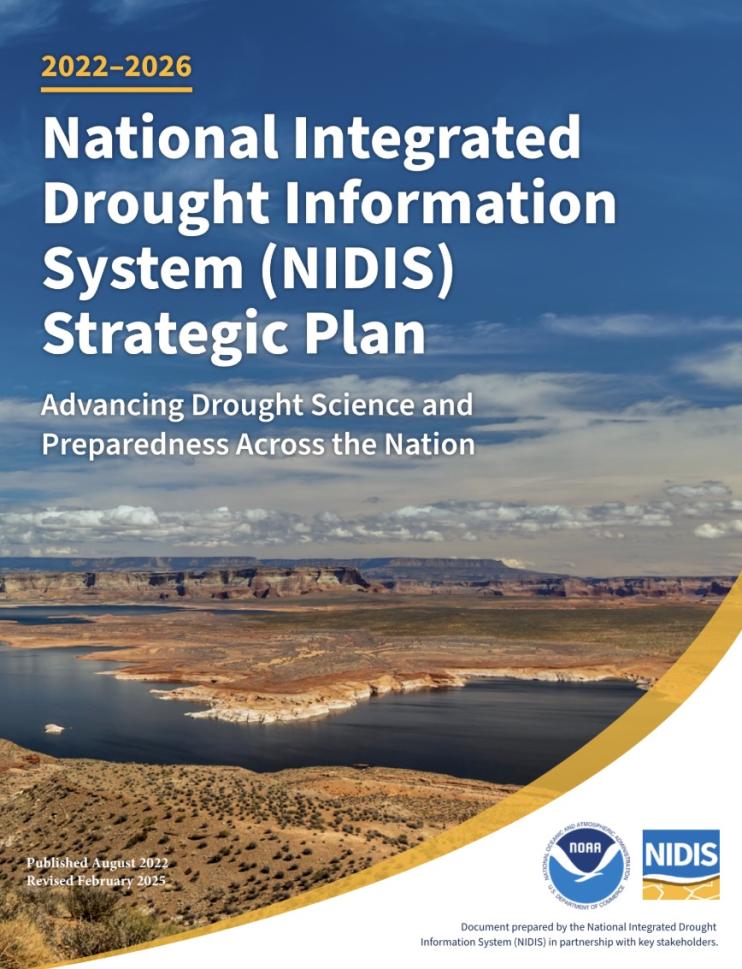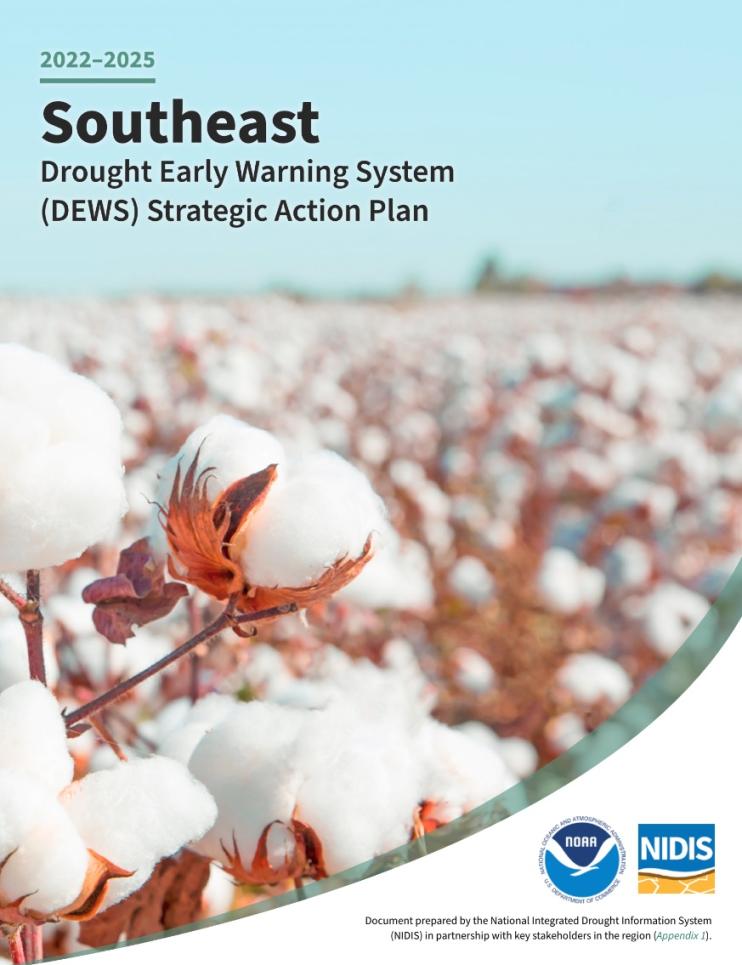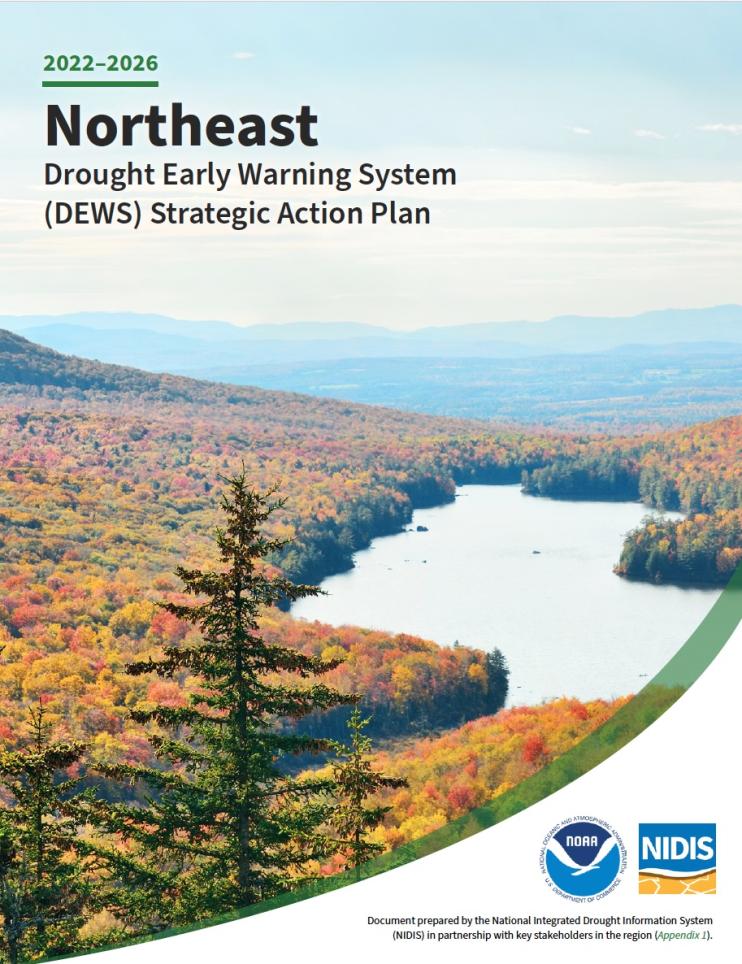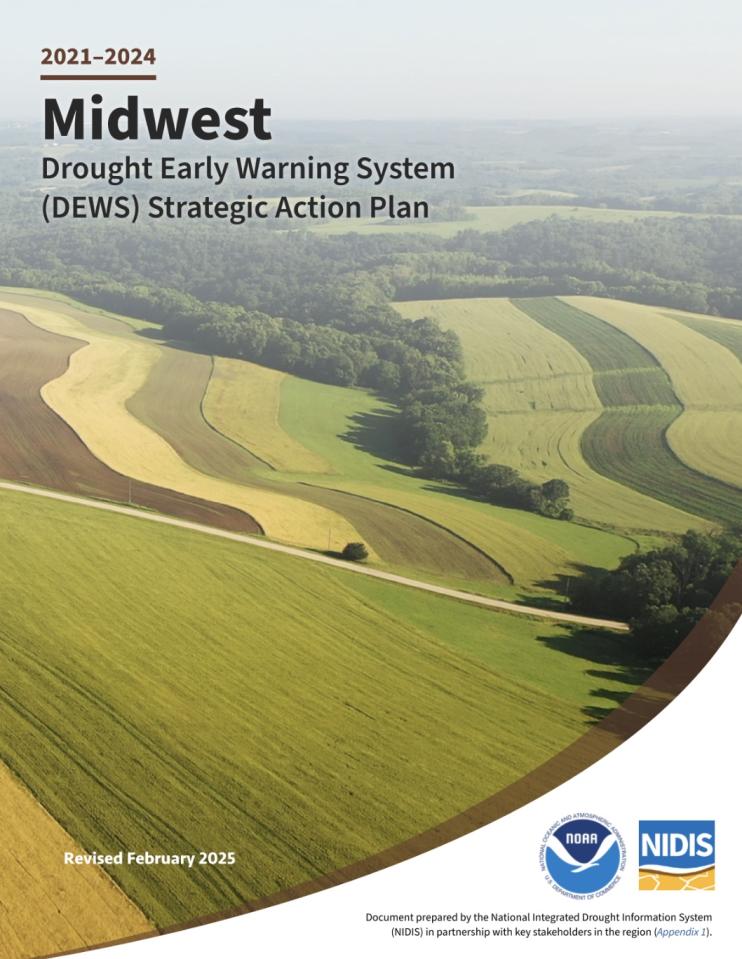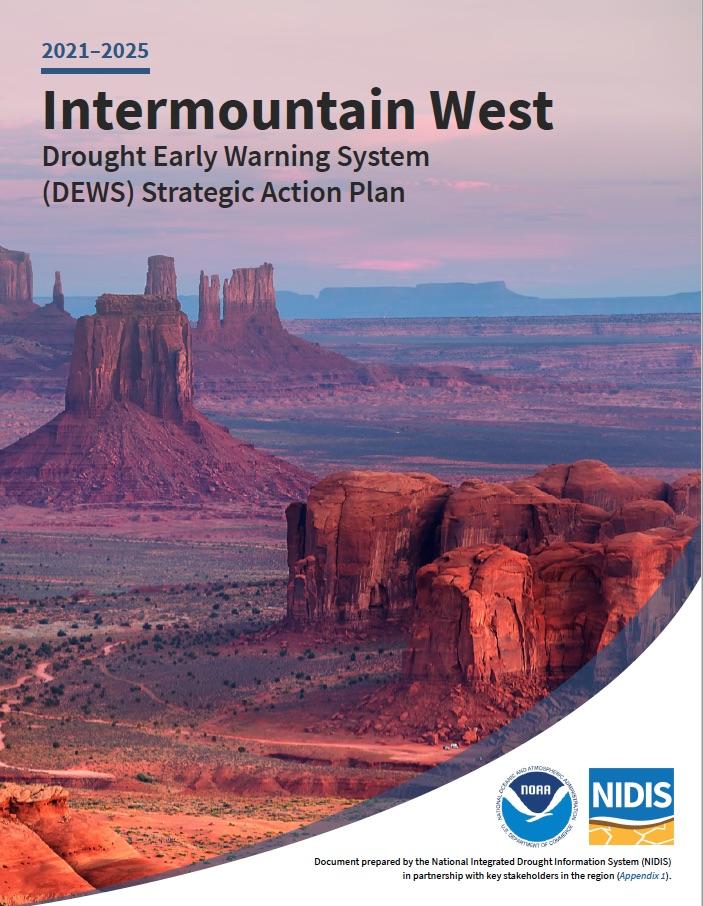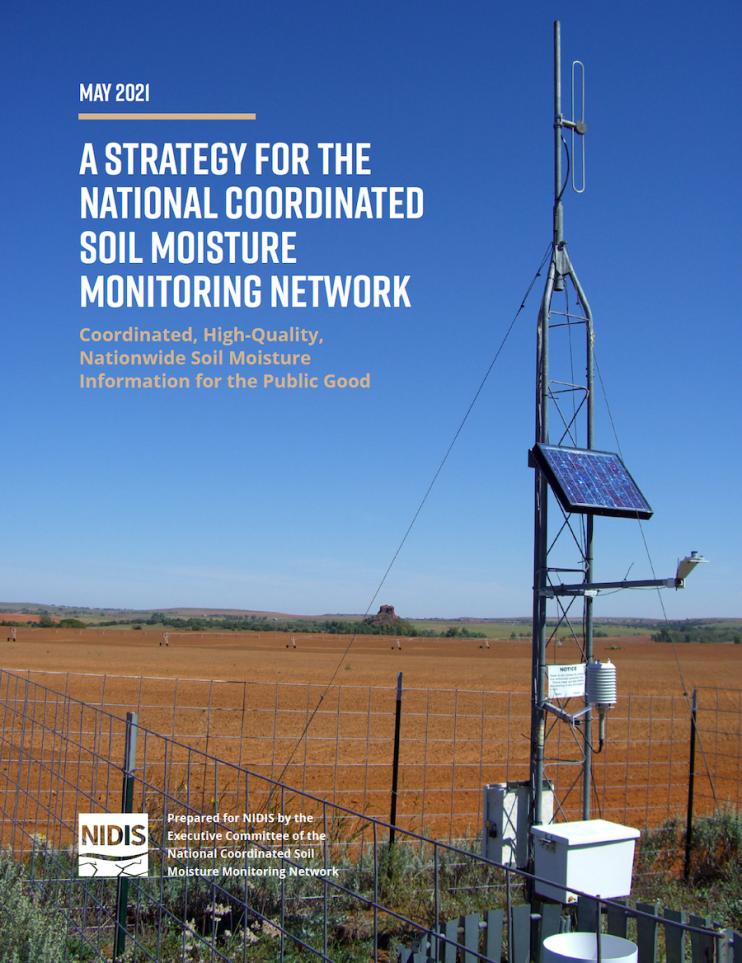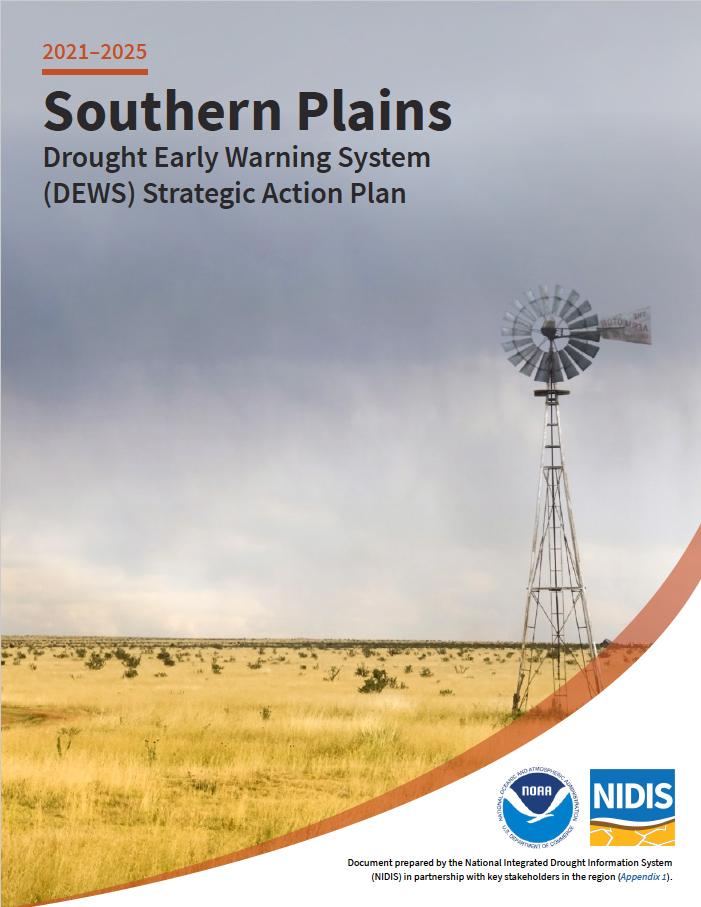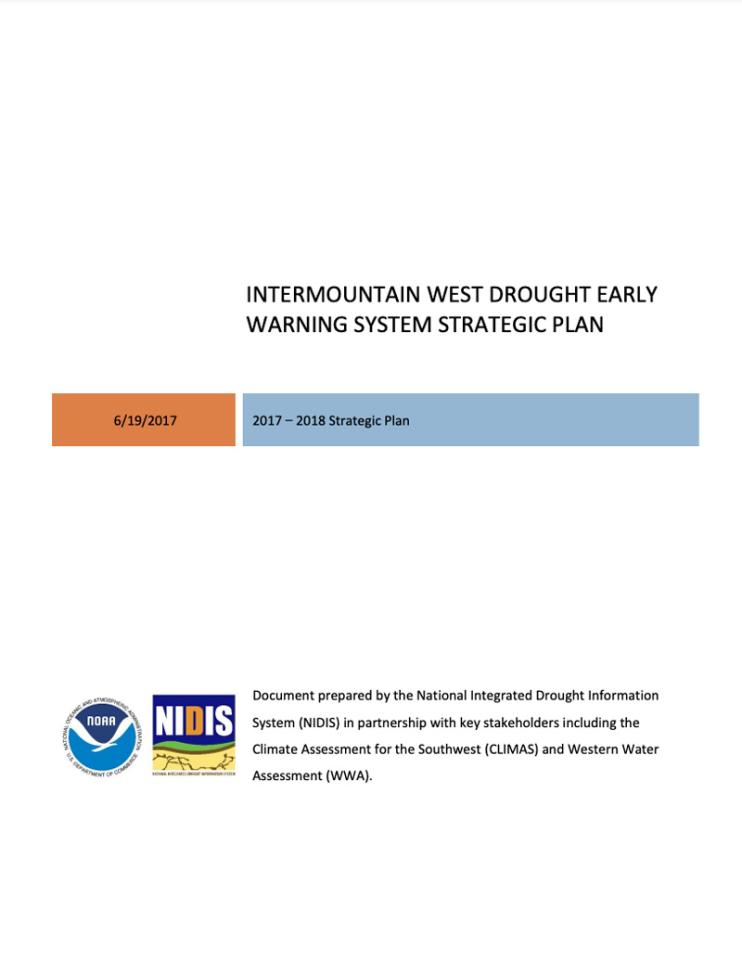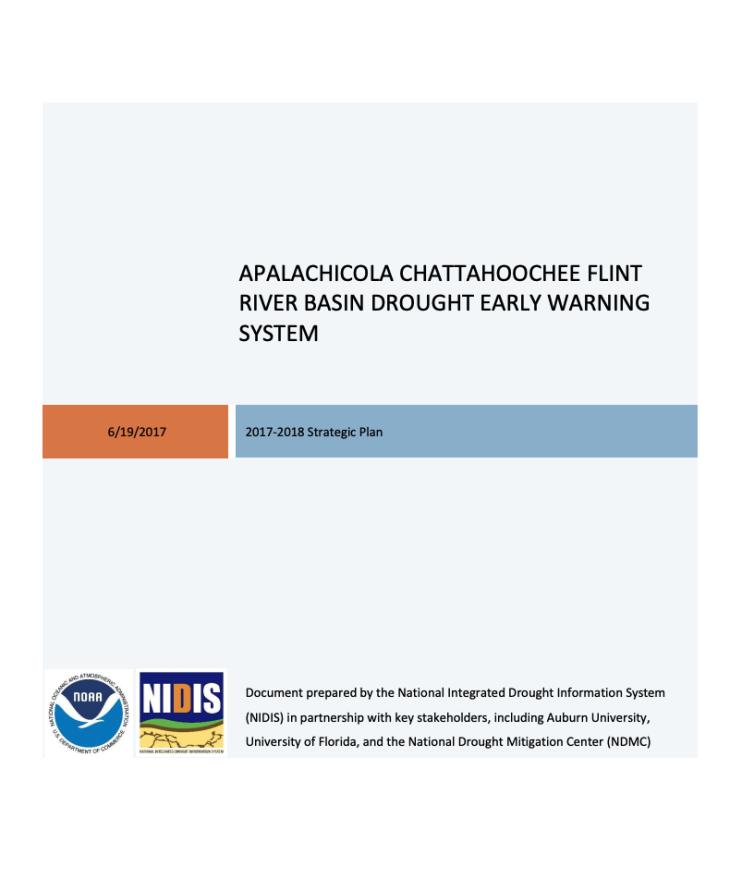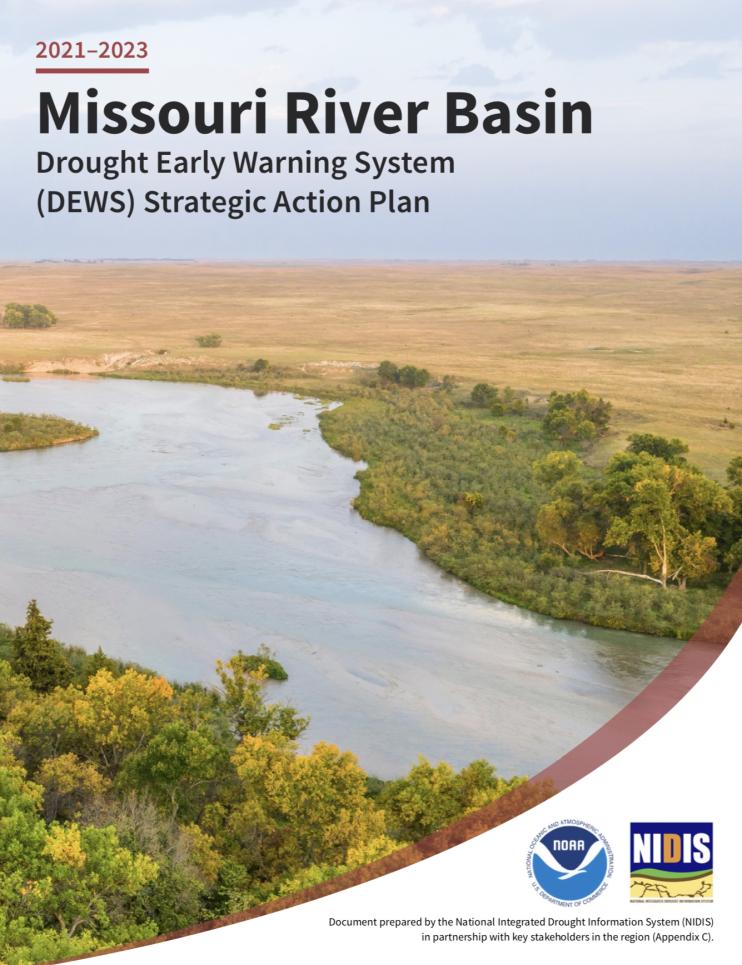The 2022–2026 National Integrated Drought Information System (NIDIS) Strategic Plan outlines and advances NIDIS’s approach to building a national drought early warning system (DEWS).
The purpose of the 2022–2025 Southeast Drought Early Warning System (DEWS) Strategic Action Plan is to clearly articulate jointly identified information needs, set priorities for the DEWS network, and suggest measurable actions to improve drought early warning and preparedness for the region.
The purpose of the 2022–2026 Northeast Drought Early Warning System (DEWS) Strategic Action Plan is to document regionally identified needs and offer a guide for future activities that will improve drought early warning and preparedness in the Northeast DEWS. Partners from across New England and New York attended virtual listening sessions in October and November of 2020 to discuss the progress made and identify next steps.
The purpose of the 2021–2024 Midwest Drought Early Warning System (DEWS) Strategic Action Plan is to identify priorities, outcomes, and activities the Midwest DEWS plans to undertake together to improve drought early warning and preparedness for the region.
The 2021–2025 Intermountain West Drought Early Warning System (DEWS) Strategic Action Plan was developed following a series of stakeholder meetings held virtually in October and November 2020. Each virtual meeting was focused on one of the following sector needs: Colorado River management and issues; water management (non-Colorado River); farming and cropping; livestock; recreation and tourism; and forestry, ecology, and fire management. Attendees were asked about how drought impacted their lives, their jobs, and their businesses.
The National Coordinated Soil Moisture Monitoring Network (NCSMMN) is a collaborative effort among federal agencies, soil moisture scientists, state mesonet operators, and others to plan for and support nationally-coordinated soil moisture monitoring, data assimilation, and product development. As a key milestone of this effort, and in direct response to the requirement in the NIDIS Reauthorization Act of 2018 (P.L.
The development of the Southern Plains Drought Early Warning System (DEWS) was initiated in 2011 during a record-setting drought across the southern tier of the United States. From 2010–2015, drought persisted throughout parts of the region, impacting portions of Texas, Oklahoma, and New Mexico. This drought cost several billion dollars and was considered a major disaster for the region. Today, the Southern Plains region continues to face challenges brought about by drought and other extreme weather events that significantly affect communities and local economies.
The 2017–2018 Intermountain West (IMW) Drought Early Warning System (DEWS) Strategic Plan outlines priority tasks and activities across the region to build drought early warning capacity and resilience. It includes a list of current partners, outcomes, and key milestones. This Plan is a “living document” to which additional actions and partners may be added as needed.
The ACF DEWS Strategic Plan (Plan) outlines priority tasks and activities across the region to build drought early warning capacity and resilience. It includes a list of current partners, outcomes, and key milestones. This Plan is a “living document” to which additional actions and partners may be added as needed.
The Missouri River Basin (MRB) Drought Early Warning System (DEWS) Strategic Action Plan outlines priority tasks and activities to build drought early warning capacity and resilience. In early 2017, meetings were held to update the existing strategic plan, including a new focus on enhancing tribal capacity to use drought information and the use of new tools and drought indicators across the region. Before that plan could be finalized, drought quickly engulfed the Northern Plains region.


